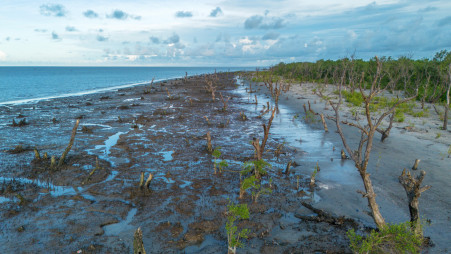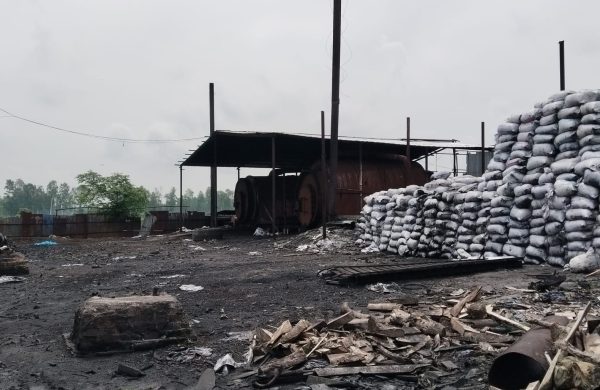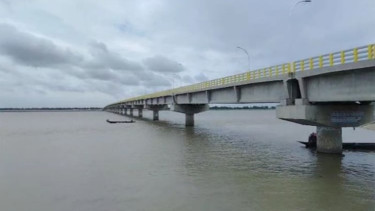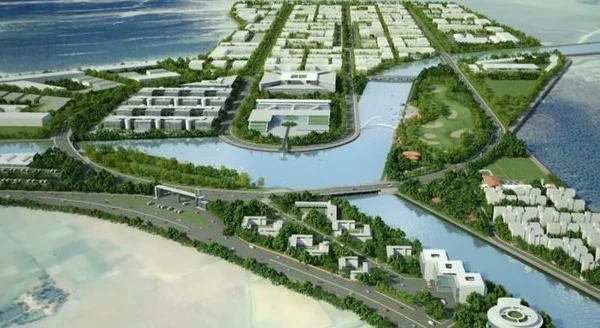Kuakata’s green shield crumbles: Thousands of trees dying annually
- Update Time : Tuesday, August 19, 2025

TDS Desk:
Rubel Sikder, a middle-aged resident of Kuakata, collects dead branches from Kuakata’s Gangamati forest almost daily to meet his fuel needs. Yet he is deeply concerned about the dying trees.
“Trees protect us during storms and tidal surges,” he said. “No matter how big the waves from the Bay of Bengal, the trees of Gangamati act as a shield. During Sidr, Aila, Amphan, Sitrang, and Remal, they saved us from greater damage. Now I see trees dying every day, and I don’t know why.”
Tourist Sanjib Shil shared similar concerns. “I heard long ago that Kuakata had a national park, but I saw nothing when I came. In Gangamati, Kauar Char, Lembur Forest, Jhaubon, and near the three rivers’ confluence, I saw countless dead trees. Kuakata’s beauty has been ruined,” he said.
According to the Forest Department, one-third of Kuakata’s forests have been lost in just five years due to erosion, illegal clearing, and natural tree deaths. An estimated 12,000 to 15,000 trees die each year, posing a serious threat to the area.
Md Tariqul Islam of the Coastal Forest Division, Patuakhali, said, “From Khajura to Gangamati, there used to be 1,600 hectares of forest. Currently, 1,100 hectares remain. In five years, 500 hectares have disappeared.”
Kuakata Ecopark was established in 2005, two kilometres east of Zero Point, at a cost of nearly Tk3 crore to prevent beach erosion and preserve natural beauty.
On 24 October 2010, it was declared Kuakata National Park. However, over the past 14 years, much of the park has been lost to erosion, and even the remaining areas are seeing their trees die.
WHY ARE THE TREES DYING?
Although trees have been dying for years, the rate has risen sharply in recent times. A walk along Kuakata beach shows thousands of dead trees, including hardy coastal species like keora, choyla, jhau, and pine.
Md Tariqul Islam said, “Severe soil erosion has been occurring along the shores for several years. Rising seabed and water levels, driven by sea pollution, and tidal water entering the forest are major causes. Sand carried by the water clogs the trees’ breathing roots, cutting off nutrients and causing them to die.”
He added, “Human-based pollution threatens Kuakata’s survival within fifty years, as disrupting nature upsets the ecological balance.”
Former Mahipur range officer Abul Kalam said, “Saline water is the main reason trees are dying. When it reaches the roots, it speeds up death. Pollution also plays a role. The rapid rate of tree deaths makes me worry about the forest’s survival.”
KM Bachchu, convener of the Coastal Environment Protection Movement, said, “The trees dying is a serious warning. Rising tides carry water deep into forests, and sand blocks trees’ breathing roots. Where white sand piles up, trees die quickly.
“The Forest Department has failed to protect the forest—forest grabbers enter, set fires, cut into trunks to accelerate death, and then harvest the wood. Various groups at different levels are working systematically to clear Kuakata’s forests.”
Hafiz Ashraful Haque, chairman of the Department of Coastal Studies and Disaster Management at the University of Barishal, added, “Salinity, shoreline erosion, declining biodiversity, and contamination are causing tree deaths. The first line of defence has been destroyed, and management does not calculate how many visitors the area can sustain. Kuakata’s ecosystem is collapsing.”
To address the crisis, the Forest Department has begun creating new forests on alternative land. Md Tariqul Islam said, “Over the past five years, we have planted over one million saplings. But without local residents’ cooperation, it will not be possible to stop tree deaths and forest disappearance.”
















